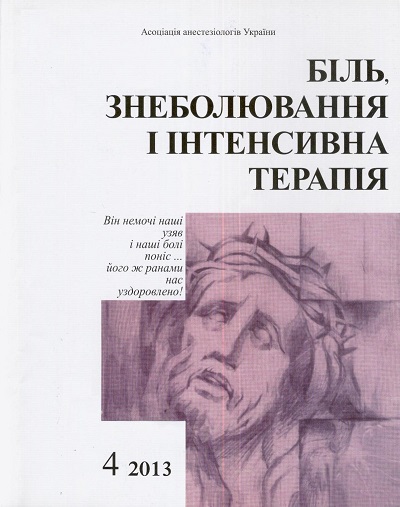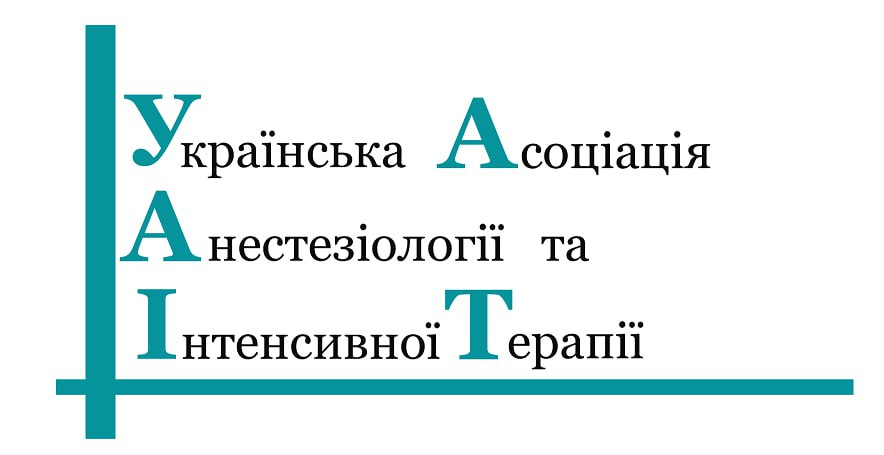Послеоперационные осложнения у больных с ожирением в небариатрической абдоминальной хирургии
DOI:
https://doi.org/10.25284/2519-2078.4(65).2013.105153Анотація
Ежегодно в мире выполняют от 187,2 млн до 281,2 млн тяжелых операций, то есть примерно одну операцию на 25 чел. В развитых странах частота осложнений после хирур гических манипуляций составляет от 3,0 до 21,9% Ожирение считается фактором риска неблагоприятного исхода после операций из-за таких легочных осложнений, как синдром гиповентиляции, ателектазирование и эмболизм легких, а также из-за риска развития кардиоваскулярных осложнений и нарушения заживленияПосилання
Weiser TG, Regenbogen SE, Thompson KD et al. (2008) An estimation of the global volume of surgery: a modelling strategy based on available data. Lancet; 372: 139-144. https://doi.org/10.1016/s0140-6736(08)60878-8
Kable AK, Gibberd RW, Spigelman AD (2002) Adverse events in surgical patients in Australia. Int J Oual Health Care: 14: 269-276. https://doi.org/10.1093/intqhc/14.4.269
Flancbabm L, Choban PS (1998) Surgical implications of obesity. Annu Rev Med; 49: 215-234. https://doi.org/10.1146/annurev.med.49.1.215
Planas M, Audivert S, Purez-Portabella C ex al. (2004) Nutritional status among adult patients admitted to an university-affiliated hospital in Spain at the time of genoma. Clin Nutr; 23: 1016-1024. https://doi.org/10.1016/j.clnu.2004.01.003
Ogden CL, Carroll MD, Curtin LR et al. (2006) Prevalence of overweight and obesity in the United States, 1999-2004. JAMA; 295: 1549-1555. https://doi.org/10.1001/jama.295.13.1549
Mullen JT, Moorman DW, Davenport DL (2009) The Obesity Paradox: Body Mass Index and Outcomes in Patients Undergoing Nonbariatric General Surgery. Ann Surg; 250: 166-72. https://doi.org/10.1097/sla.0b013e3181ad8935
Moldawer LL, Copeland EM (1997) Proinflammatory cytokines, nutritional support, and the cachexia syndrome. Cancer; 79: 1828-1839. https://doi.org/10.1002/(sici)1097-0142(19970501)79:93.3.co;2-d
Birkhahn RH, Long CL, Fitkin D et al. (1981) Whole-body protein metabolism due to trauma in man as estimated by L-[15N] alanine. Am J Physiol; 241: E64-E7l.
Castaneda C, Charnley JM, Evans WJ, Crim MC (1995) Elderly women accommodate to a low-protein diet with losses of body cell mass, muscle function, and immune response. Am J Clin Nutr; 62: 30-39.
Jeevanandam M, Young DH, Schiller WR (1991) Obesity and the metabolic response to severe multiple trauma in man. J Clin Invest; 87: 262-269. https://doi.org/10.1172/jci114980
Brown CY, Neville AL, Rhee P et al. (2005) The impact of obesity on the outcomes of 1,153 critically injured blunt trauma patients. J Trauma; 59: 1048-1051. https://doi.org/10.1097/01.ta.0000189047.65630.c5
Byrnes MC, McDaniel MD, Moore MB (2005) The effect of obesity on outcomes among injured patients. J Trauma; 58: 232-237. https://doi.org/10.1097/01.ta.0000152081.67588.10
Mullen JT, Davenport DL, Mutter MM (2008) Impact of body mass index on perioperative outcomes in patients undergoing major intra-abdominal cancer surgery. Ann Surg Oncol; 15: 2164-2172. https://doi.org/10.1245/s10434-008-9990-2
Reeves BC, Ascione R, Chamberlain MH, Angelini GD (2003) Effect of body mass index on early outcomes in patients undergoing coronary artery bypass surgery. J Am Coll Cardiol; 42: 668-676. https://doi.org/10.1016/s0735-1097(03)00777-0
Kuduvalli M, Grayson AD, Oo AY et al. (2003) The effect of obesity on mid-term survival following coronary artery bypass surgery. Eur J Cardiothorac Surg; 23: 368-373. https://doi.org/10.1016/s1010-7940(02)00827-8
Mealy LA, Ryan AM, Gopinath В et al. (200r) Impact of obesity on outcomes in the management of localized adenocarcinoma of the esophagus and esophagogastric junction. J Thorac Cardiovasc Surg; 134: 1284-1291. https://doi.org/10.1016/j.jtcvs.2007.06.037
Canoy D, Luben R, Welch A (2004) Abdominal obesity and respiratory function in men and women in the EPIC-Norfolk Study, United Kingdom. Am J Epidemiol; 159: N 1140-1149. https://doi.org/10.1093/aje/kwh155
Merkow RP, Bilimona KY, McCarter MD, Bentrem DJ (2009) Effect of body mass index on short-term outcomes after colectomy for cancer. J Am Coll Surg; 208: 53-61. https://doi.org/10.1016/j.jamcollsurg.2008.08.032
Zacharias A, Schwann ТА, Riordan CJ et al. (2005) Obesity and risk of new-onset atrial fibrillation after cardiac surgery. Circulation; 112: 3247-3255. https://doi.org/10.1161/circulationaha.105.553743
Pritchett AM, Jacobsen SJ, Mahoney DW et al. (2003) Left atrial volume as an index ofleft atrial size: a population-based study. J Am Coll Cardiol; 41: 1036-1043. https://doi.org/10.1016/s0735-1097(02)02981-9
Iacobellis G, Ribaudo MC, Leto G (2002) Influence of excess fat on cardiac morphology and function: study in uncomplicated obesity. Obesity; 10: 767-773. https://doi.org/10.1038/oby.2002.104
Wang TJ, Parise И, Levy D (2004) Obesity and the risk of new-onset atrial fibrillation. JAMA; 292: 2471-2417. https://doi.org/10.1001/jama.292.20.2471
Wanahita N, Messerli FM, Bangalore S (2008) Atrial fibrillation and obesity—results of a meta-analysis. Am Heart J; 155: 310-315. https://doi.org/10.1016/j.ahj.2007.10.004
Pavlidis ТЕ, Galatianos IN, Papaziogas ВТ, Lazaridis CN et al. (2001) Complete dehiscence of the abdominal wound and incriminating factors. Eur J Surg; 167: 351-354. https://doi.org/10.1080/110241501750215221
Webster С, Neumayer L, Smout R et al. (2003) Prognostic models of abdominal wound dehiscence after laparotomy. J Surg Res; 109: 130-137. https://doi.org/10.1016/s0022-4804(02)00097-5
Mäkelä JT, Kiviniemi H. Juvonen T, Laitinen S (1995) Factors influencing wound dehiscence after midline laparotomy. Am J Surg; 170: 387-390. https://doi.org/10.1016/s0002-9610(99)80309-2
Choban PS, Heckler R, Burge JC., Flancbaum L (1995) Increased incidence of nosocomial infections in obese surgical patients. Am Surg; 61: 1001-1005.
Cantürk Z, Cantürk NZ, Çetinarslan В (2003) Nosocomial infections and obesity in surgical patients. Obes Res; 11: 769-775. https://doi.org/10.1038/oby.2003.107
Myles TD, Gooch J, Santolaya J (2002) Obesity as an independent risk factor for infectious morbidity in patients who undergo cesarean delivery. Obstet Gynecol; 100: 959-964. https://doi.org/10.1097/00006250-200211000-00024
Anaya DA, Dellinger EP (2006) The obese surgical patient: a susceptible host for infection. Surg Infect; 7: 473-480. https://doi.org/10.1089/sur.2006.7.473
Milano CA, Kesler K, Archibald N (1995) Mediastinitis after coronary artery bypass graft surgery: risk factors and long-term survival. Circulation; 92: 2245-2251. https://doi.org/10.1161/01.cir.92.8.2245
Brem H. Tomic-Canic M (2007) Cellular and molecular basis of wound healing in diabetes. J Clin Invest; 117: 1219-1222. https://doi.org/10.1172/jci32169
House M, Fong Y, Arnaoutakis D (2008) Preoperative predictors for complications after pancreaticoduodenectomy: impact of bmi and body fat distribution. J Gastrointest Surg; 12: 270-278. https://doi.org/10.1007/s11605-007-0421-7
Ishii Y, Hasegawa H, Nishibori H (2005) Impact of visceral obesity on surgical outcome after laparoscopic surgery for rectal cancer. Br J Surg; 92: 1261-1262. https://doi.org/10.1002/bjs.5069
Tanaka K, Miyashiro I, Yano M (2009) Accumulation of excess visceral fat is a risk factor for pancreatic fistula formation after total gastrectomy. Ann Surg Oncol; 16: 1520-1525. https://doi.org/10.1245/s10434-009-0391-y
Tsujmaka S, Konishi F, Kawamura Y (2008) Visceral obesity predicts surgical outcomes after laparoscopic colectomy for sigmoid colon cancer. Dis Colon Rectum; 51: 1757-1767. https://doi.org/10.1007/s10350-008-9395-0
Tsukada K, Miyazaki T Kaio H (2004) Body fat accumulation and post-operative complications after abdominal surgery. Am Surg; 70: 347-351.
van den Berghe G, Wouters P, Weekers F (2001) Intensive insulin therapy in critically ill patients. N Engl J Med; 345: 1359-1367. https://doi.org/10.1056/nejmoa011300
Weyer C. Yudkin JS, Stehouwer CD (2002) Humoral markers of inflammation and endothelial dysfunction in relation to adiposity and in vivo insulin action in Pima Indians. Atherosclerosis; 161: 233-242. https://doi.org/10.1016/s0021-9150(01)00626-8
Kim CS, Park HS, Kawada T (2006) Circulating levels of MCP-1 and IL-8 are elevated in human obese subjects and associated with obesity-related parameters. Int J Obes (Land); 30: 1347-1355. https://doi.org/10.1038/sj.ijo.0803259
Berg AH, Scherer PE (2005) Adipose tissue, inflammation, and cardiovascular disease. Circ Res; 96: 939-949. https://doi.org/10.1161/01.res.0000163635.62927.34
Coppola A, Marfella R, Coppola L et al. (2009) Effect of weight loss on coronary circulation and adiponectin levels in obese women. Int J Cardiol; 134: 414-416. https://doi.org/10.1016/j.ijcard.2007.12.087
van Dielen FMH, Buurman WA, Hadfoune M (2004) Macrophage inhibitory factor, plasminogen activator inhibitor-1, other acute phase proteins, and inflammatory mediators normalize as a result of weight loss in morbidly obese subjects treated with gastric restrictive surgery. J Clin Endocrinol Metab; 89: 4062-4068. https://doi.org/10.1210/jc.2003-032125
Gutt CN, Oniu T, Wolkener F (2005) Prophylaxis and treatment of deep vein thrombosis in general surgery. Am J Surg; 189: 14-22. https://doi.org/10.1016/j.amjsurg.2004.04.009
Pittas AG, Siegel RD, Lau J (2004) Insulin therapy for critically ill hospitalized patients: a meta-analysis of randomized controlled trials. Arch Intern Med; 164: 2005-2011. https://doi.org/10.1001/archinte.164.18.2005
Cave MC, Hurt RT, Frazier TH, (2008) Obesity, inammation, and the potential application of pharmaconutrition. Nutr Clin Pract; 23: 16-34. https://doi.org/10.1177/011542650802300116
Ryan AM, Reynolds JV, Healy L et al. (2009) Enteral nutrition enriched with eicosapentaenoic acid (EPA) preserves lean body mass following esophageal cancer surgery: results of a double-blinded randomized controlled trial. Ann Surg; 249: 355-363. https://doi.org/10.1097/sla.0b013e31819a4789
Zheng Y, Li F, Oi В et al. (2007) Application of perioperative immunonutrition for gastrointestinal surgery: a metaanalysis of randomized controlled trials. Asia Рас J Clin Nutr; 16(Suppl. 1): 253-257.
##submission.downloads##
Опубліковано
Як цитувати
Номер
Розділ
Ліцензія
Авторське право (c) 2013 С. І. Воротинцев, Т. С. Павлов

Ця робота ліцензується відповідно до Creative Commons Attribution-NonCommercial 4.0 International License.
Автори, які публікуються у цьому журналі, погоджуються з наступними умовами:
a. Автори залишають за собою право на авторство своєї роботи та передають журналу право першої публікації цієї роботи на умовах ліцензії Creative Commons Attribution-NonCommercial 4.0 International License, котра дозволяє іншим особам вільно розповсюджувати опубліковану роботу з обов'язковим посиланням на авторів оригінальної роботи та першу публікацію роботи у цьому журналі.
b. Автори мають право укладати самостійні додаткові угоди щодо неексклюзивного розповсюдження роботи у тому вигляді, в якому вона була опублікована цим журналом (наприклад, розміщувати роботу в електронному сховищі установи або публікувати у складі монографії), за умови збереження посилання на першу публікацію роботи у цьому журналі.
c. Політика журналу дозволяє і заохочує розміщення авторами в мережі Інтернет (наприклад, у сховищах установ або на особистих веб-сайтах) рукопису роботи, як до подання цього рукопису до редакції, так і під час його редакційного опрацювання, оскільки це сприяє виникненню продуктивної наукової дискусії та позитивно позначається на оперативності та динаміці цитування опублікованої роботи (див. The Effect of Open Access).








